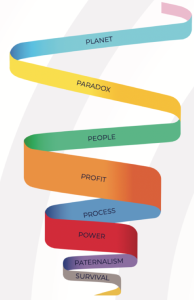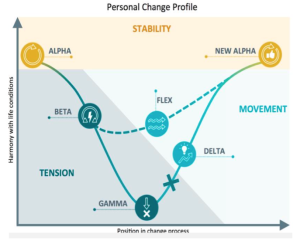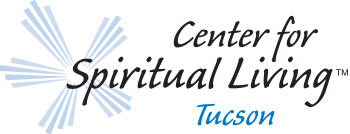Me to We and Back Again
“If you want to go fast, go alone, if you want to go far, go together.” — African Proverb
I’ve realized in these past few weeks that I’m quickly running out of time to ‘speak about’ one of the ideas that I’ve wanted to share with you all for most of a decade. I still haven’t figured out how to do it, but here goes. It’s an idea that originates from the world of psychology, and business, and totally belongs in a conversation of spiritual evolution for individuals and communities.
You remember in the Four Kingdoms of Consciousness that Dr Michael Beckwith made popular, there are different levels of consciousness – Level one, Victim (Stuff happens to me); Level 2, Victorious (Stuff happens by my thoughts, choices, decisions & actions); Level 3, Conduit (Stuff happens through me); and Level 4, Mastery/As One In God (Stuff happens as me). If you don’t remember this model, look up Beckwith on YouTube. This model is worth a refresher if you don’t remember it.
One piece of this model that is easy to forget is that every single one of us moves between the different levels multiple times a day, depending on the state of our awareness, and our momentary physical, mental/psychological, emotional and spiritual wellbeing. Most individuals will have a level that serves as their home base – most individuals who have been around New Thought for a while and have embodied the principles tend to have their home base at Level 2 or higher. (I know of no human who walks on the earth at this time who lives primarily in Level 4. The best most of us can do is visit there, now and then.)
Another piece of this model that’s easy to forget is that it’s somewhat of a linear process – that is, you can’t skip over a step. Even if you don’t want to be materialistic, you still have to have the experience and awareness of being able to manifest your desires (level 2) before you can move into levels 3 and 4.
This other model that I want to introduce is called Spiral Dynamics. The article,  “The Never-Ending Upward Quest” by Jessica Roemischer, gives a more in-depth introduction to the Spiral Dynamics model. The model’s basic premise is that individuals and groups automatically move up and (for short periods) down the spiral of social development. No level is bad or wrong.
“The Never-Ending Upward Quest” by Jessica Roemischer, gives a more in-depth introduction to the Spiral Dynamics model. The model’s basic premise is that individuals and groups automatically move up and (for short periods) down the spiral of social development. No level is bad or wrong.
Each level is appropriate to the social conditions that the person or group experiences, and what shifts each individual and group up or down the levels is their reaction to, or resistance to, change. (…more on that in a minute) Each level (stage) builds on the previous level, and you can’t skip a level because you don’t like it. Each one of us moves through different levels in different parts of our lives and in different situations, depending on our state of awareness, our reaction to changing conditions, and our momentary physical, mental/psychological, emotional and spiritual wellbeing.
The basic level, at the bottom of the spiral, is simple survival. The next level is ‘Paternalism’ aka tribalism, where there is an in-group that matters, and everyone else who doesn’t. This is the first level of group, or ‘we consciousness’. The next level
that naturally arises from the tribal consciousness is that of the Tribal Leader. Someone has to make the decisions, after all! (Think about George Orwell’s 1984, “All pigs are equal, but some pigs are more equal than others.”)
The leader is not necessarily benevolent, but their presence and leadership does provide stability and structure that usually allows the larger group to flourish.
The next stage of social evolution is the ‘Rules-and-Regulations’ group or the Order-based group. An example of this group would be an organization, like the US Military or the Catholic Church. As long as an individual aligns with the rules of the group, then all is well. If not, and the organization can control or suppress the outlying individual, they will.
Sometimes, an individual will learn to work the ‘system of order’ to maximize their own benefit. This gives rise to the next stage of development, which on the spiral is shown as ‘Profit’. Richard Branson/Virgin Airlines and Elon Musk with his many ventures are examples of this stage of social evolution. When there is a reaction to individuals such as Branson or Musk, it can arise from within the ‘Rules & Regulations’ folks, or it can arise from the next stage of the model, which is shown on the spiral as ‘People’.
In this group — People — everyone’s voice matters, and it’s really hard to get anything done because no one wants to be the one in charge. This stage of social evolution looks a lot like the earlier Tribal model, except the tribe is massive.
Most modern ‘First World’ individuals live somewhere on the spiral between the Order-based group and the People-focused group. The individuals we think of as successful are often operating primarily from the individually-focused Profit-focused group. In general, ‘First World’ individuals and groups have moved past the level of social evolution associated with simple survival – though in situations of massive destruction like major fires, earthquakes or hurricanes, you will find people desperate enough to choose to serve their own survival needs, or their immediate family needs, over the community needs.
There are still more stages of the spiral beyond the People-focused stage. In the Spiral Dynamics model, the upward shift to the next level after ‘People’ is challenging, because not only is everyone’s contribution valued, but all the people at all the levels are seen as already providing value to the whole.
And so it goes, ad infinitum.
 Next, I want to take a quick peek at this ‘Change Model’. The key idea is that we humans generally prefer to live in the ‘alpha’ state of stability and peace. But when stuff happens in our lives that pulls us off balance (the ‘beta’ state in the diagram), we have choices we can make. We can adapt/flex with that change, work with Reality as it is, or we can fight with it and stay in an upset or tension state.
Next, I want to take a quick peek at this ‘Change Model’. The key idea is that we humans generally prefer to live in the ‘alpha’ state of stability and peace. But when stuff happens in our lives that pulls us off balance (the ‘beta’ state in the diagram), we have choices we can make. We can adapt/flex with that change, work with Reality as it is, or we can fight with it and stay in an upset or tension state.
In Science of Mind terminology, this is simply an expression of working beneficially with the Law of Cause and Effect. We can recognize when we are in resistance (arguing with Life). We can ignore Reality and stay miserable; or we can redirect our focus and attention and realign with Life, and return to ‘alpha’.
We always have the option of staying miserable. It’s a choice, and people do make that choice. Sometimes folks don’t know that they have another option, because they’ve accepted the cultural conditioning that says they are powerless. Until they choose to take responsibility for their life experiences rather than thinking they are victims, they are stuck. Their stuckness is evidence of living in First Kingdom mentality from Michael Beckwith’s Four Kingdoms of Consciousness model. Lots of people choose to believe they are powerless and stay stuck in that powerlessness.
While the Four Kingdoms model is entirely focused on the growth and maturation of the individual, the Spiral Dynamics model recognizes that we (humans) automatically can and will switch between the levels/stages and adjust our focus between individual’s success and the success of our group. Dr David Hawkins (author of Power Versus Force) said that historically change like this happened only very slowly through the generations. He also noted that the rate of change/evolution has increased in recent decades. This is good news.
If you want to learn more about the Spiral Dynamics model, there are several books, articles, and YouTube videos that discuss it. If you read the online publication Medium, check out the writings of Jon Freeman on the topic. For our newsletter, I’ve added an article, “The Never-Ending Upward Quest” by Jessica Roemischer from the journal What Is Enlightenment?, first published fall/winter 2002.
Dr Jim Lockhard has written Creating The Beloved Community introducing these ideas in the context of spiritual community and Being The Beloved Community which is about how spiritual communities can choose to deal constructively with change. Unfortunately, you can’t understand the second book without reading and digesting the first book. The classic textbook by Don Beck and Christopher Cowan, Spiral Dynamics, Mastering Values, Leadership and Change, can give you additional background on the topic.
I know I’ve thrown a lot of information at you in these almost 1500 words. I think it is important to introduce you to this highly valuable, testable model that helps us recognize who/where we are individually and as a group. The good news — this progression to higher order thinking and awareness happens whether we know about it or not. But knowing about it, we can choose to direct our attention and focus toward greater consciousness. We always have choice in the speed, and ease, of our individual and collective transformation. Happy spiraling!
The link to “The Never-Ending Upward Quest” by Jessica Roemischer from the journal What Is Enlightenment?, first published fall/winter 2002.
Rev. Dr. Jim Lockard Creating The Beloved Community
The classic textbook by Don Beck and Christopher Cowan, Spiral Dynamics, Mastering Values, Leadership and Change is available from various sources online.




